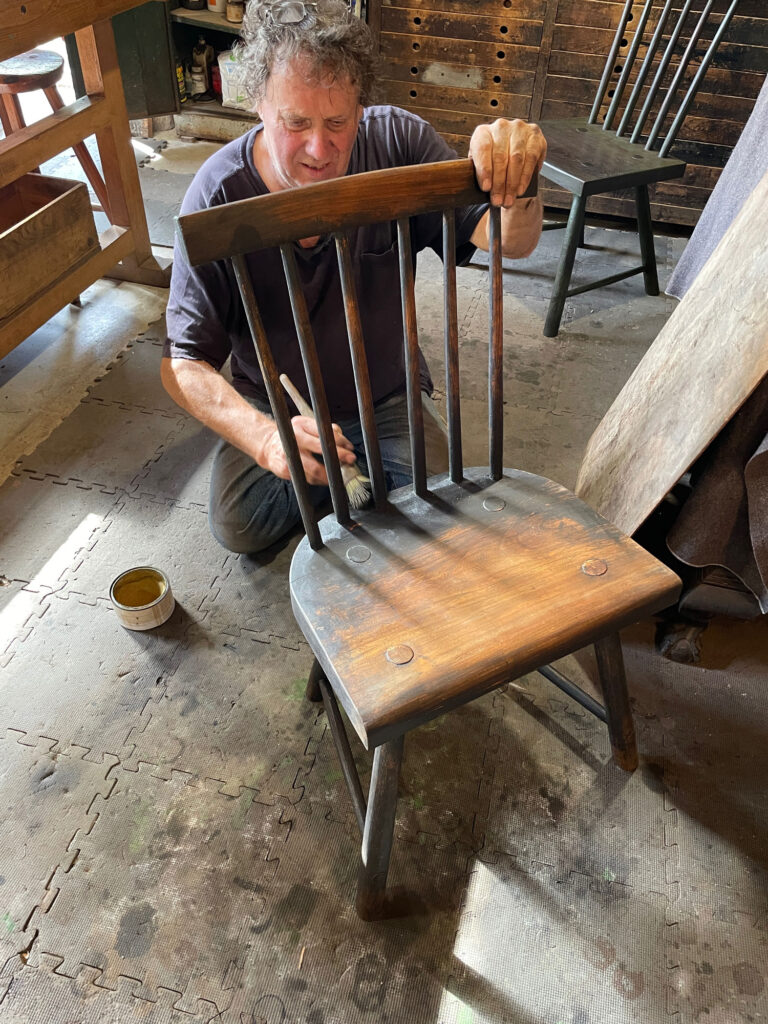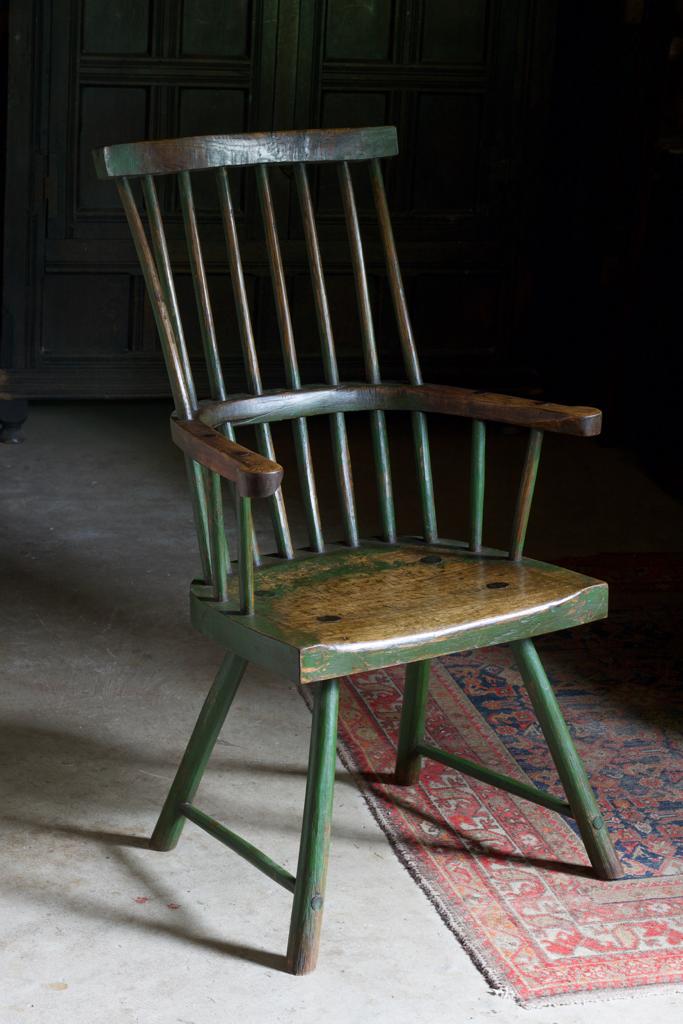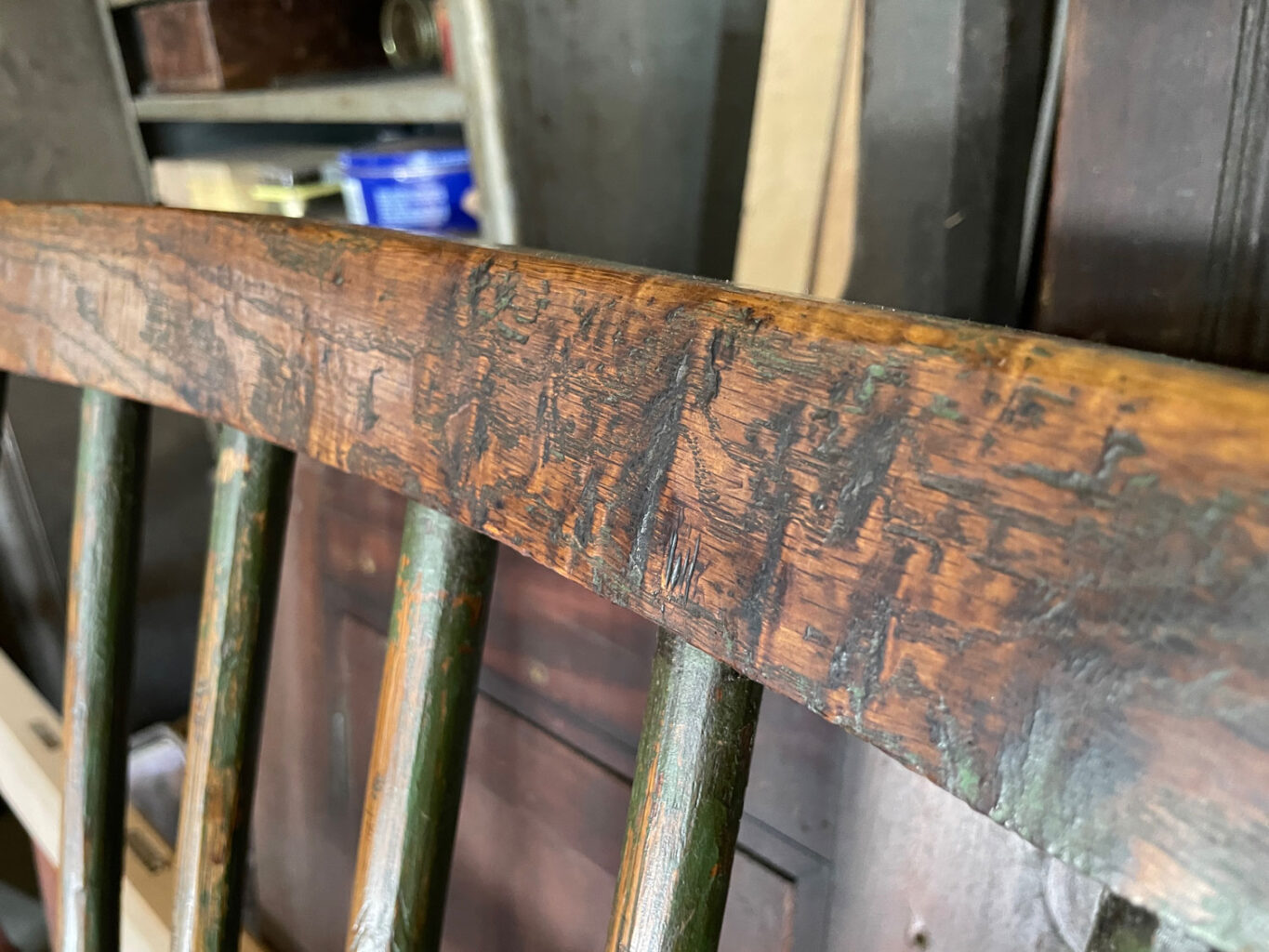One aspect of furniture finishing that has not been fully explained is how to achieve the gently worn, warm and human surfaces that you find on antiques.
Sure, there are lots of people who "age" furniture by thrashing it with heavy chains and burying it in a dung pile. But their furniture looks like crap (at best) and not believable (at worst).
During the last few years, I've gotten to know John Porritt, a British chairmaker and antiques restorer who works from a small red shed in upstate New York. Porritt has been at his trade for many decades, and his eye for color and patina is outstanding. I've seen many examples of his work, and it is impressive because you cannot tell that any repair or restoration has been done.
For his first book, "The Belligerent Finisher," Porritt explains all the steps in taking a new chair and transforming it into something that looks like it's 200 years old. The goal is not to produce fakes, but instead to create a finish that looks correct for pieces built on antique patterns.
His techniques are simple and use (mostly) everyday objects and chemicals – a pot scrubber, a deer antler, vinegar and tea. How you apply these tools – with a wee bit of belligerence – is what's important.
The book will be lavishly illustrated with color photos. Megan and I spent two long days with Porritt in his shop, documenting every process for the book. We are currently editing the text and working on the page design. If all goes to plan, the book will be available in late summer or early fall.
Both Megan and I were properly amazed at the results Porritt achieved in a short period of time. We think almost anyone with a little patience (and belligerence) will be able to achieve beautiful results.
— Christopher Schwarz




No comments:
Post a Comment